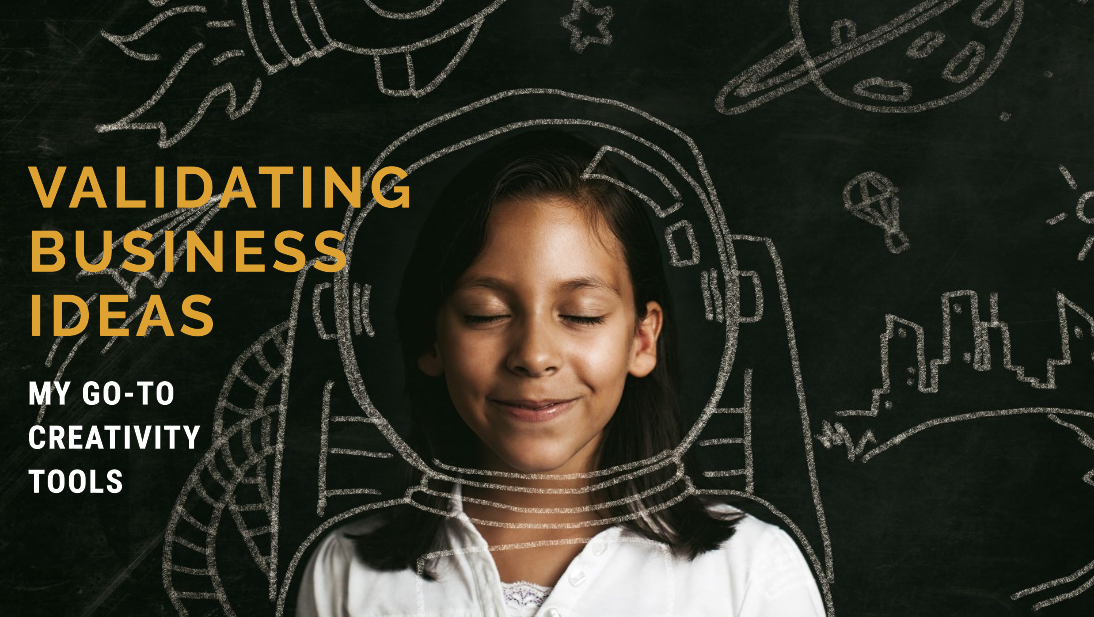Unleashing Innovation: My Go-To Tools for Validating Business Ideas

Innovation is the lifeblood of any thriving business. To ensure that my ideas
are not just innovative but also viable, I rely on a suite of creativity tools
that guide me through different stages of business design.
In this post, I will delve into three essential tools that have been
instrumental in validating my business ideas: the Value Lab 1,
the TRIZ framework2, and the Lean Startup methodology3.
1 Laying the Foundation: The Value Lab
The tool I use to lay down the foundation of an idea is the Value Lab. It is defined as “a virtual laboratory wherein managers and entrepreneurs creatively compose and test strategy in more scientific and evidence-based ways". This methodology guides you to design a “Theory of Value,” implying that only with a supportive theory are you able to identify the key elements of an innovation.
Though concise, the Value Lab helps effectively capture what to look for to
bring your idea to life:
the contrarian belief (what you believe that almost
no one else believes), the problems that prevent the realization of this belief,
and the activities you need to perform to solve those problems.
It is a structured approach that helps you ground your innovation in reality
while keeping an eye on its potential impact.
2 Igniting Creativity with TRIZ
To enhance problem solving in the Value Lab, I recently started to integrate it
with the TRIZ framework. TRIZ offers powerful creativity tools that help
spotlight elements of innovation that improve the Ideality of a system
by solving problems and addressing technical risks.
Ideality is defined as the ratio of benefits,
useful outputs, to costs, all inputs, and harms, all other outputs.
Ideality = Benefits / Costs + Harms
What sets TRIZ apart is its ability to find solutions to problems.
The creators of TRIZ, by analyzing thousands of patents and scientific papers,
identified a well-defined set of solutions that recur in technical and
scientific settings.
By abstracting your problem to a conceptual level, TRIZ provides different lists
of conceptual solutions that you can adapt to your context and creatively model
solutions. This means solving problems quickly and efficiently, which is crucial
in the fast-paced world of product innovation.
One of the most powerful aspects of TRIZ is its ability to help us identify and overcome technical contradictions. These contradictions arise when we try to improve one parameter of a system, only to negatively impact another. TRIZ offers a variety of inventive principles and techniques to resolve these contradictions and avoid inefficient compromises.2
3 Validating the Customer Perspective: Lean Startup
When analyzing the idea from the point of view of the final customer, the Value Proposition Canvas from the Lean Startup framework is incredibly useful. It helps bring clarity to the customer job you are planning to solve. The distinctive value of Lean Startup lies in its focus on customer validation.
The idea is to “get out of the building”4 and get in front of customers as soon
as possible, performing quick agile iterations for product-market fit.
Customer validation and the validation of the business model through the
Business Model Canvas, another great tool of Lean Startup, eventually become
pivotal.
This process helps you address market risk and detail all elements of
your business idea, including cost structures and revenue streams.
I tend to use this framework at a later stage with physical products, when I
have a marketable Minimum Viable Product (MVP), or when intellectual property
and secrecy concerns have been solved.
Customer validation and agile iterations can be challenging to implement with
physical products. In such cases, a more traditional waterfall approach to MVP
development may be necessary. This is a linear sequential design process,
in which progress is seen as flowing steadily downwards (like a waterfall)
through the phases of early design and duct tape prototypes, engineering
prototype and verification, manufacturing process verification and
manufacturing.
The iterative process of Lean Startup certainly suits software products, which
are easier to display to customers and make gathering data straightforward.
4 Conclusion
Innovation is not just about having great ideas. It’s about systematically
validating and refining those ideas until they become viable products.
By using tools like the Value Lab, TRIZ framework, and Lean Startup methodology,
you can ensure that your innovations are not only creative but also grounded
in reality and tailored to meet market needs. These tools provide a structured
path from concept to market, enhancing your ability to innovate effectively
and efficiently.
👉 Ready to innovate? Let’s discuss your next project. Contact